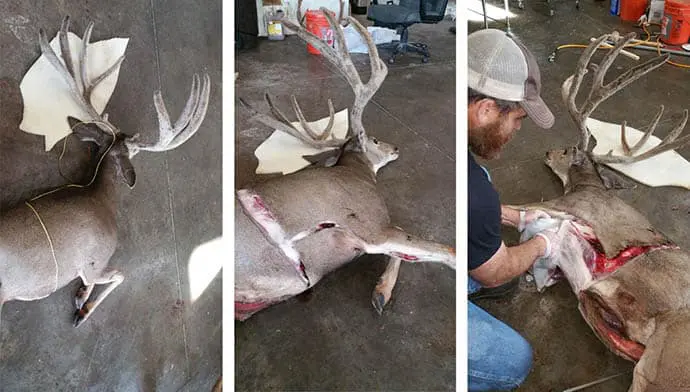
Deer hunting is one of the most popular categories of outdoor sports, but there are a few technicalities involved which you will learn as you go along. You will be confronted with the issue how to cape a deer from your first successful deer hunt.
You may be in the company of an experienced hunter who will show you what to do. However, you may not have this advantage. We bring you this step-by-step guide that shows you how to cape a deer even if you have never done it before. It is simpler than you imagined.
It is important to retain the head, neck, and shoulders, extracting them from the rest of the carcass and preserving them properly until you reach a taxidermist. Protecting these parts is very critical to the entire caping process which is the reason for this useful guide.
Related: Where To Shoot A Deer – Top 5 Best Places To Shoot A Deer
What you will need:
- A sharp set of knives, preferably 2 to 3 of different sizes
- Surgical gloves
- Waterproof apron
- Hacksaw Frame
- Spare Hacksaw Blades
- Small Screwdriver
- Waste cloth for wiping
- A bucket of water
- Mug
How to Cape your Deer
We often make mistakes with the most obvious things, so it’s always a good idea to follow a set procedure, especially while doing something which you cannot redo. You can ruin a perfectly good cape without adequate knowledge. If you just follow these simple steps, you will be able to get the perfect trophy made:
Where to Start
Make the first cut around the midsection of the carcass, preferably around the center of the stomach.
Now cut the skin from the center of the back to the base of the head. You will have to make a short incision if it is for an early season mule or whitetail due to the relatively shorter fur.
Antlers
If your deer has velvet covered antlers, you need to part the hair between the velvet and the head skin and make a cut there. Making this incision will prevent the velvet from peeling off.
This step is only necessary on velvet-covered antlers. Part the hair between the skin of the head and the velvet and cut directly between them, separating the velvet and the hide.
FURTHER READING
➜ Important Guidelines On How To Successfully Field Dressing A Deer
➜ Best AR 15 Bipod Reviews – The Best Bipod for AR15
Torso









